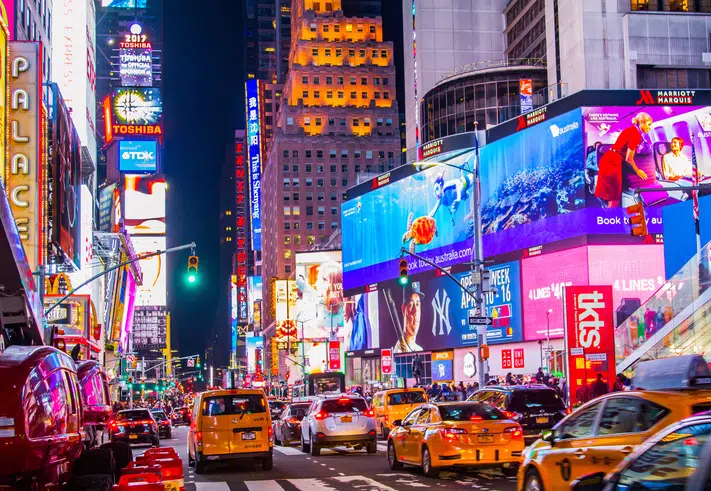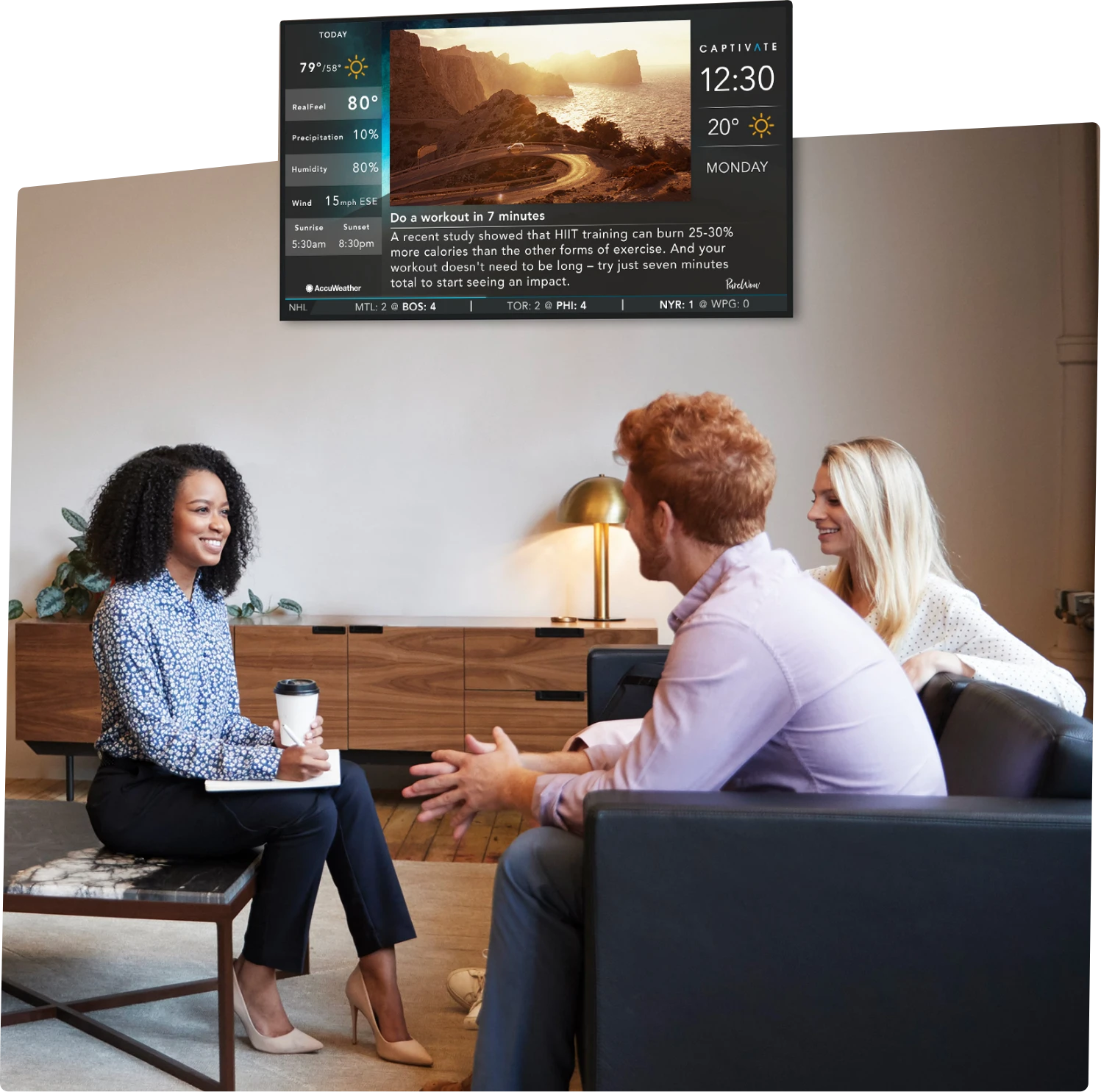Understanding the Difference Between OOH Advertising & DOOH Advertising
Today, reaching consumers effectively is more important than ever.
Out-of-home (OOH) advertising and its digital counterpart, digital out-of-home (DOOH) advertising, have become essential tools for brands seeking to connect with their target audiences. While both methods serve to engage consumers outside of their homes, they do so in significantly different ways.
TLDR/Summary
This article explains how traditional out-of-home (OOH) advertising and digital out-of-home (DOOH) differ. OOH uses static formats like billboards and broad targeting. DOOH uses digital screens with dynamic content, precise targeting (time, audience, behavior), and higher engagement. Captivate offers a digital screen network to leverage DOOH advantages.
What is OOH Advertising?
Out-of-home (OOH) advertising refers to any advertising that reaches consumers while they are outside their homes. This includes various formats, such as billboards, transit posters, street furniture (like bus shelters), and more.
OOH advertising has a long history and is known for being a mass-reach medium that generates high visibility and awareness in public spaces. Most forms of traditional OOH ads are static and can be highly effective for brand awareness campaigns, especially in urban city centers and high-traffic areas.
What is DOOH Advertising?
Digital out-of-home (DOOH) advertising is a subset of OOH advertising that utilizes digital screens to display advertisements.
This includes digital elevator ads, video displays, digital billboards, and interactive kiosks found in public spaces. DOOH offers the advantage of dynamic content, allowing brands to change their messages in real time based on factors such as audience demographics, time of day, or even current events.
One of the primary benefits of DOOH is its ability to precisely target audiences based on a variety of additional niche factors such as location and even behavioral data. This targeting allows brands to tailor their messages in real-time, adapting content to specific audience segments based on time of day, current events, or the unique characteristics of a location.
This flexibility can lead to higher engagement rates and the ability to tailor messages to specific audiences.
Key Differences Between OOH and DOOH Advertising
1. Format and Content Delivery
OOH advertising typically consists of static images and text, which means the content remains unchanged for the duration of the campaign.
In contrast, DOOH advertising employs digital technology, enabling dynamic content that can rotate, change, or update based on various triggers. This capability allows brands to customize their creative message strategy in precise, nuanced ways that maximize contextual relevance and impact.
2. Targeting and Measurement
OOH advertising relies on broad geographic targeting, which can limit its effectiveness in reaching specific audiences.
DOOH, however, offers advanced targeting options through data analytics, allowing brands to reach specific demographics based on location, time of day, and audience behavior. This data-driven approach enhances measurement capabilities, enabling advertisers to track performance metrics and measure attribution.
3. Engagement
While both OOH and DOOH can capture audience attention, DOOH tends to offer higher engagement rates due to its interactive capabilities and eye-catching visuals.
OOH is often delivered in passive and busy environments, such as driving by billboards or walking past ads on a subway platform, where viewers may notice the ads but not feel engaged.
In contrast, DOOH advertising offers customized experiences tailored to the environment in which they’re served. For example, elevator advertising creates a captive environment with close-range viewing, making it a welcomed experience that alleviates awkwardness and fosters engagement. This dynamic interaction allows brands to connect more meaningfully with their audiences, resulting in higher engagement rates.
Upgrade Your Advertising Strategy
As the advertising landscape continues to evolve, understanding the difference between OOH and DOOH advertising is crucial for brands looking to maximize their impact.
While OOH provides a proven method for reaching mass audiences, DOOH takes it a step further with digital flexibility, targeting precision, and enhanced engagement.
For brands ready to embrace the future of advertising, Captivate offers a leading digital display network that connects agencies and brands with high-value audiences. To learn more about how Captivate can help you leverage DOOH advertising, get started today.

Would you like to extend the conversation?
Book a demo to learn more about impactful, engaging digital signage solutions from Captivate.

